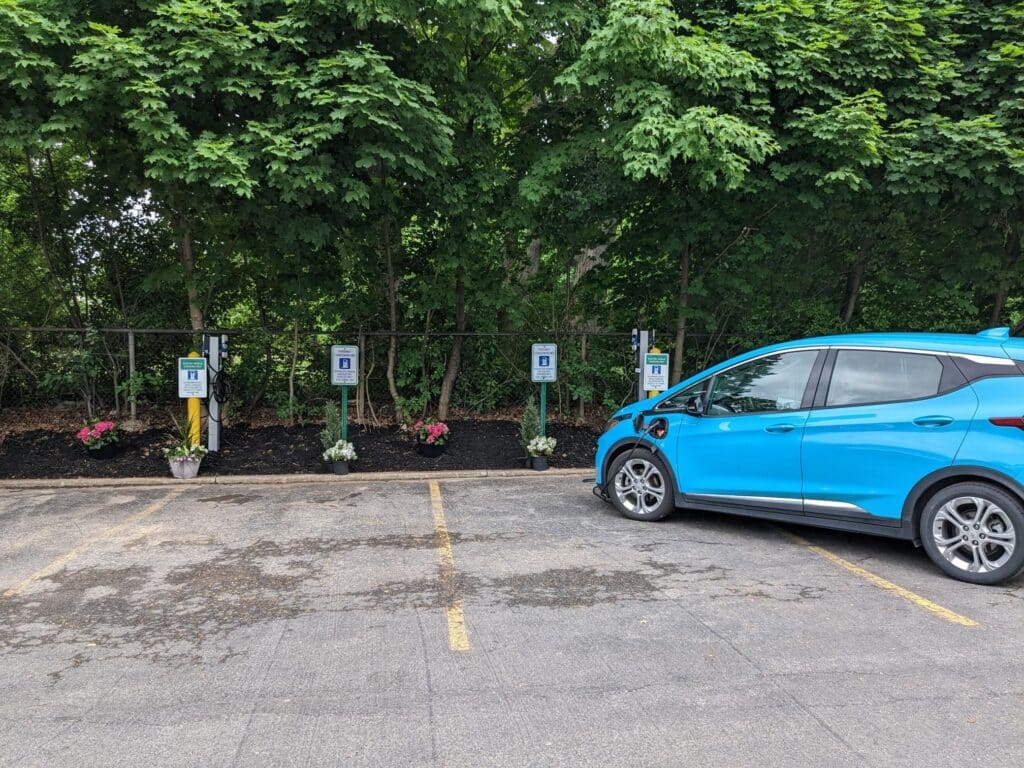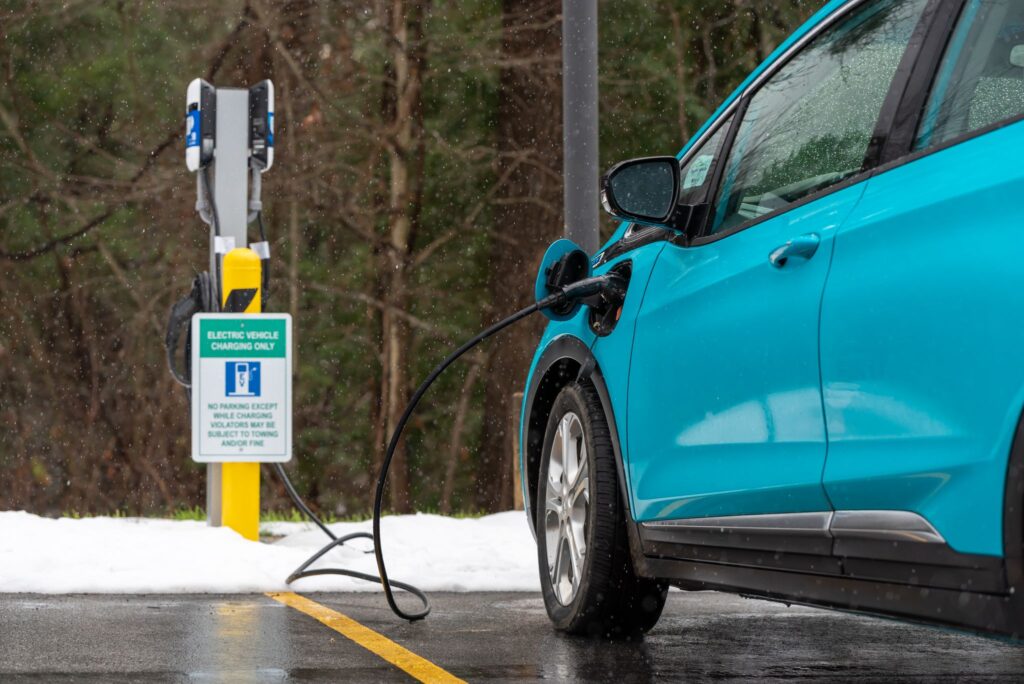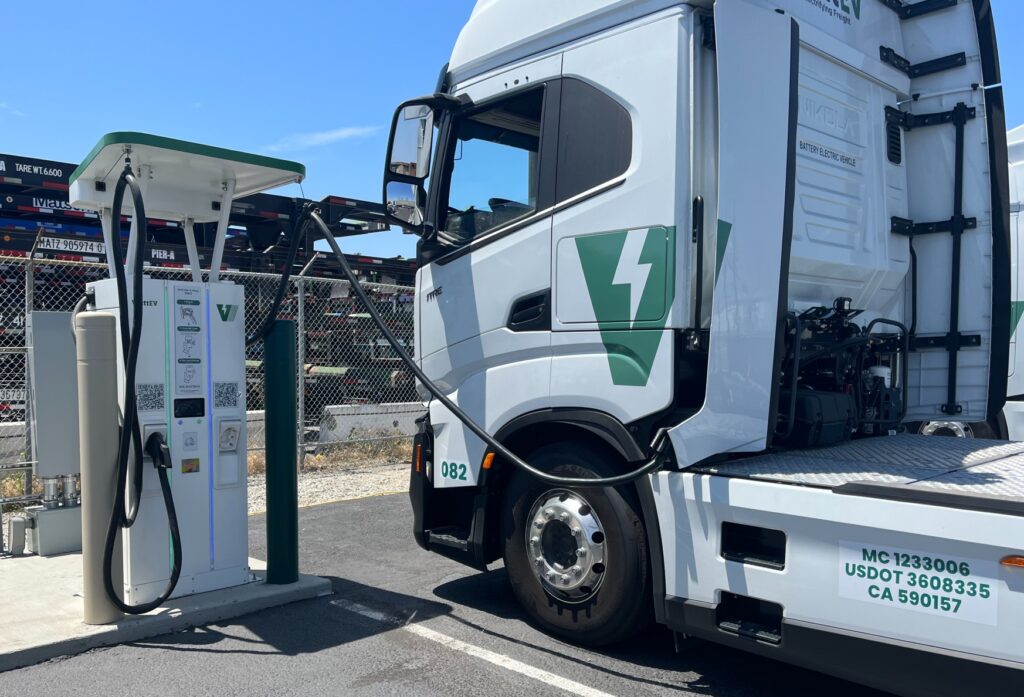EV Adoption Keeps Momentum Going Into 2024, Despite Bumps in the Road
With 72 days remaining as the globe and the United States move into 2024, EV adoption continues to grow quickly. However, this growth is challenging. The United States struggles to achieve the impressive growth enjoyed by China and countries such as Norway, which reported its new passenger plug-in cars were about 90.9 percent of the total volume in July 2023.

The rise of electric vehicles (EVs) is undoubtedly a significant milestone in the automotive industry’s evolution. As per industry experts, it’s estimated that by 2030, EVs will constitute as much as 40% of car sales, marking a paradigm shift from mere growth tracking to a full-blown transition towards fossil fuel-free motoring. The optimism surrounding EV adoption rates is palpable, yet several human, structural, and environmental considerations largely govern the speed of this transition.
Crucially, it’s not merely about persuading consumers of the benefits of EVs – it’s about assuring them of a robust, accessible, and reliable nationwide EV charging network. Concurrently, despite the ongoing decline, the relatively high prices of EVs also pose a challenge to their widespread adoption. Presently, homeowners constitute the majority of EV owners, thanks to the convenience of home charging. However, addressing the scarcity of EV charging facilities for residents of multi-family units, and advancing curbside EV charging initiatives, are issues that require urgent attention.

The EV adoption curve
The EV adoption curve, a manifestation of the Rogers’ diffusion of innovations theory, features five distinct stages. Each stage represents a unique adopter category with specific characteristics and behaviors. Most experts agree that the U.S. is still in the early adopter stage.
Innovators: This group forms the vanguard of EV adoption. Comprised of risk-takers, they are open to experimenting with new ideas and technologies and have the resources to do so. Innovators are the first individuals to adopt electric vehicles.
Early Adopters: Serving as opinion leaders, early adopters play a crucial role in the proliferation of EVs. They are more influential in their communities, and owing to their acceptance, electric vehicles have started to gain traction.
Early Majority: This consumer segment is more practical and deliberate in their decision-making. They take time to adopt new concepts but take a measured, calculated approach to EV adoption instead.
Late Majority: These individuals exhibit caution and skepticism, embracing electric cars more slowly. They typically adopt the innovation when it has already gained popularity and is more accessible.
Laggards: Representing the final stage of the adoption curve, these individuals are often resistant to change. They may harbor an attachment to gas-powered vehicles and require substantial incentives to adopt new ideas and technologies, making them the consumer group most resistant to electric car innovations.
Widespread EV Adoption
As of 2020, global EV sales barely nudged 2 million units. However, experts forecast a dramatic increase, predicting the figure could skyrocket to a staggering 73 million by 2040. Despite these optimistic projections, it remains too early to declare widespread EV adoption. To put things into perspective, out of the estimated 289 million cars registered on U.S. roads, a scant 2 million are electric. Nonetheless, the EV landscape is poised for a seismic shift. Despite their current under-representation on highways, EVs are predicted to dominate in terms of sales. Factoring in the average lifespan of a car, which is approximately 12 years, the proportion of EVs on the road is expected to spike dramatically. This surge will occur as new electric vehicles replace gas-powered cars being phased out of service.
EV Driver Factors
The progress of the electric vehicle (EV) industry will count for nothing if it doesn’t resonate with the consumer. Drivers seek a safe, affordable, and comfortable means of transportation. As it stands, the onus is on EV manufacturers to convincingly sell this vision. However, the concept is not solely reliant on the appeal of the vehicles themselves. The supporting infrastructure, such as accessible charging stations and incentives that encourage changes in behavior, is equally crucial. If drivers encounter difficulties charging their vehicles, or if there are insufficient incentives to stimulate a shift towards EVs, they cannot be expected to adopt electric vehicles at the same pace observed in other parts of the world, notably China and the European Union.

Demographics of EV adopters
There is a clear consensus: public awareness and acceptance of electric vehicles (EVs) have overcome significant hurdles, with brands like Tesla now globally recognized. Yet, there remains a demographic challenge – traditional or older drivers continue to prefer gasoline vehicles. Studies indicate that while 30% of newer drivers aged 18-25 plan to buy an EV as their next car, a majority of 58% in the U.S. still plan to stick with gasoline. To achieve broader adoption among this demographic, EV manufacturers must lay out a compelling case that EVs surpass gasoline vehicles in both cost-effectiveness and performance. The stakes are high, but the potential rewards are even greater. If EV manufacturers can successfully demonstrate these advantages, they stand to accelerate the transition towards sustainable transportation significantly.
EV Charging Infrastructure
The recent passing of the Infrastructure and Jobs Act, which allocates a considerable $7.5 billion towards the development of a nationwide charging network, offers an optimistic outlook for EV infrastructure. This investment is expected to facilitate the installation of fast chargers along the interstate highway system, significantly alleviating the prevalent issue of ‘range anxiety’ among potential EV adopters. The ambitious goal is establishing a robust network of 500,000 EV chargers through a national EV program. Given the current ratio estimates that one charger is needed for every 10 to 15 EVs, the magnitude of the task ahead is clear. However, this legislative commitment sends a strong signal to manufacturers and consumers alike that the transition to electric vehicles is a national priority, leading us one step closer to a sustainable transportation future.

Availability of EV charging stations
Further adding to the complexity of the situation, a recent survey of U.S. drivers revealed that the availability of charging stations is the number one concern shared by 49% of potential EV buyers. As of October 2023, the Alternative Fuels Data Center, offered by the U.S. Department of Energy’s Energy Efficiency and Renewable Energy Department, reported 58,738 electric vehicle charging station locations. Unfortunately, these stations are mainly clustered on the east and west coasts, leaving the rest of the country, particularly the Great Plains region, underserved. This uneven distribution of charging opportunities is inadequate to support an electric vehicle’s typical mile range. This stark contrast underscores the urgent need for a more balanced and widespread deployment of charging stations, especially in less populated or rural areas, to truly make EV adoption a viable option for all Americans.
NEVI grants push EV charging stations forward
The $5 billion National Electric Vehicle Infrastructure (NEVI) Program is a landmark initiative addressing this issue. This program aims to strategically deploy Direct Current (DC) Fast Charging infrastructure nationwide, establishing an interconnected charging network that offers consistent data collection, access, and reliability. The focus is on increasing the number of charging stations and ensuring their operational excellence and security. Qualifying projects can receive up to 80% of their costs from NEVI grants. However, these projects must meet strict standards around the charging experience, uptime, reporting, cybersecurity, and more. Such stringent parameters ensure the charging stations are reliable and safe, encouraging more drivers to switch to electric vehicles. This initiative is a significant step in making EV adoption a viable and convenient option for more Americans, bringing us closer to a sustainable transportation future.
Publicly accessible charging station reliability addressed
In September 2023, the Biden-Harris Administration took a momentous stride to address the glaring issue of EV charging station reliability. They announced the opening of applications for the “Electric Vehicle Charger Reliability and Accessibility Accelerator“. This program is designed to provide up to $100 million in federal funding to repair and replace existing, non-operational, electric vehicle (EV) charging infrastructure. These targeted investments will enhance the dependability of the existing charging network and stimulate private sector investment, expected to be in the hundreds of billions. This influx of funds will create numerous well-paying jobs across the country, spanning roles in installing, maintaining, and repairing EV infrastructure. By bolstering the resilience and functionality of the current charging network, this initiative is set to further augment the appeal of EV adoption for American drivers.
EV station charging speed
One of the recurring concerns among potential EV adopters revolves around the time it takes to fully charge an electric vehicle. This aspect is influenced by both the vehicle’s capabilities and the charging station’s specifications. A Level 3 charger can boost an EV’s charge to 80 percent in about 20 minutes. However, the charging duration is notably longer for Level 2 (public chargers) and Level 1 (domestic chargers). The good news is that with the advent of advanced battery algorithms and novel cooling technologies, experts anticipate a significant reduction in charging times in the near future. This improvement will likely alleviate “range anxiety” among drivers, encouraging a wider adoption of EVs.
EV Manufacturing Factors
The presence of a broad range of EV options is crucial for catalyzing the shift towards sustainable transportation. Until recently, this variety was somewhat lacking, with Tesla being one of the few manufacturers producing electric vehicles at scale — around 1.8 million cars per year, to be precise. However, this responsibility no longer lies with Tesla alone. Mainstream manufacturers have joined the EV bandwagon, recognizing the potential and necessity of this technology.
For instance, automotive giants such as Ford and GM have introduced their own EV lines, actively contributing to the diversity of available electric vehicles. Simultaneously, emerging brands including Lucid, Nikola, Faraday Future, Vinfast, Fisker, and others, are entering the scene, further expanding the spectrum of EV options. These developments indicate a promising trend towards a wider adoption of electric vehicles, as consumers are offered an expanding array of choices to suit their specific needs and preferences.

Cost of EVs compared to internal combustion engine (ICE) vehicles
The high upfront cost of electric vehicles (EVs) has historically been a deterrent for potential consumers, with 67% of prospective buyers citing cost as a primary concern in a recent study. Nonetheless, the dynamics of this scenario are undergoing a transformative shift. Increased market competition, the plummeting prices of batteries, and government incentives are converging to drive EV costs toward an equilibrium with their Internal Combustion Engine (ICE) counterparts. In 2023, Tesla, a leading figure in the EV industry, announced several price drops across the U.S. and globally. This move was well-received by potential EV adopters, even though it led to a significant decrease in resale values for current Tesla owners.
EV incentives
Government policies and incentives play a crucial role in amplifying the pace of electric vehicle (EV) adoption. The extension of the light-duty EV tax credit through 2032 has solidified significant savings for consumers in the short run. The previous cap of 200,000 vehicles per manufacturer has been lifted, providing an extended runway for manufacturers to leverage the benefits. Moreover, the tax credits have been extended to used and commercial EVs, broadening the scope of the initiative. The Inflation Reduction Act has now emerged as a powerful motive at the federal level.
Drilling down to individual states, legislative measures exhibit an ambitious stance toward EV adoption. California has set the pace with a law enacted in August 2022, mandating all new cars, SUVs, and pickup trucks sold in the state to be zero-emission by 2035. This pioneering move has set a precedent, prompting other states like Massachusetts and New York to consider following suit, thus gradually restructuring the automotive landscape towards sustainability.
Proposal to allow car dealers to offer an EV point of sale discount to consumers up to $7,500
The recent proposal by the U.S. Department of the Treasury could instigate a paradigm shift in the purchase and affordability of electric vehicles (EVs). The proposed amendment seeks to allow car dealers to apply the EV tax credit directly at the point of sale, irrespective of the buyer’s federal tax liability. This actionable change, scheduled to take effect from January 1, 2024, could see new car buyers enjoying a discount of up to $7,500, while those opting for used vehicles could stand to benefit from a $4,000 reduction. This move is a strategic step towards increasing 2024 EV adoption and making EVs more economically accessible, encouraging a more diverse demographic of consumers to transition to sustainable transportation.
California will continue to lead other states in 2024 EV adoption
In the rapidly progressing electric vehicle revolution across the United States, California continues to pioneer the cause, leading other states in EV adoption. This accelerated embrace of EVs in California is largely driven by conducive government policies, heightened consumer awareness, and significant investments in charging infrastructure. The state government of California has introduced impactful incentives such as tax credits, rebates, and grants aimed at making EVs more economically accessible. Following these developments, an ever-increasing number of Californians are transitioning to environmentally friendly transportation. However, the same cannot be said for all U.S. states. Faring less favorably in the transition to EVs are Michigan, Kansas, Iowa, Mississippi, Louisiana, West Virginia, North Dakota, South Dakota, Wyoming, and Arkansas, which round out the bottom ten in terms of EV adoption.
Environmental Factors
While California has led in setting stricter emission standards beyond the federal level, nationwide commitment is crucial to create significant momentum for EV adoption. To date, 14 states have aligned with California’s aggressive targets for zero-emission and low-emission vehicles. These states are committed to bolstering the market share for EVs, with an ambitious goal of achieving 50% of total vehicle sales by 2030. This alignment demonstrates a collective resolve to combat climate change, reduce pollution, and promote adopting sustainable transportation solutions. The synergy of these efforts across multiple states will strengthen the push toward a greener and more sustainable future, making the vision of a nationwide electric vehicle revolution more attainable.
Fleet EV charging
Fleet managers are not left behind in the tax benefits for EV ownership. With appropriate financial incentives and logistic support, fleet managers are more likely to transition to EVs. Initiatives like this allow fleet operators to switch to zero-emission alternatives without bearing the upfront cost. One can expect an increase in funding for electric trucks and fleets in the near future. According to the State of Sustainable Fleets, 2023 Market Brief by Gladstein Neandross & Associates (North America’s leading clean transportation and energy consultancy), incentive funding is forecasted to average around $32 billion annually over the next four to five years, with the majority of it aiming to bolster the Zero Emission Vehicle (ZEV) market. This shift is a nod towards a more sustainable future and a testament to the potential financial benefits of embracing electric vehicles in the fleet management industry.

Grid Development
Expanding a nationwide electric grid that can meet the needs of future EV drivers is a critical aspect of supporting the transition to electric transportation. Two essential solutions that come to the fore are Distributed Energy Resources (DERs) and bidirectional charging. DERs, which include solar panels, wind turbines, and battery storage systems, can feed energy back into the grid during peak demand times, alleviating strain on the grid.
Similarly, bidirectional charging – the ability of an electric vehicle not only to draw energy from a power source but also to feed it back – provides additional flexibility and resilience. Vehicles can be charged when electricity is plentiful and cheap and then supply power back to the grid during times of high demand. This process, called Vehicle-to-Grid (V2G) technology, promotes grid reliability and maximizes energy use efficiency.
The availability of these smart, clean charging solutions is paramount in achieving grid reliability while maintaining the commitment to sustainability. It allows us to reap the most benefits from our transition to electric vehicles by using renewable energy resources more effectively. As we move forward, the integration of such solutions will enable a more robust and sustainable electric grid that is fully prepared for the increased adoption of electric vehicles.
EV Batteries experiencing tremendous innovations
Since 2021, the demand for lithium, a key component in electric vehicle (EV) batteries, has outpaced the supply, putting considerable pressure on manufacturers. This scenario necessitates the deployment of advanced battery technologies that use fewer critical minerals, thereby helping to deliver cleaner, more sustainable power. Concurrently, manufacturers are exploring alternative power technologies to ensure the sustainability and efficiency of the EV industry.
In the midst of these developments, major manufacturers are already making strides in introducing solid-state batteries. These new generation batteries not only charge at a much quicker pace but are also capable of offering an impressive range of up to 745 miles. This advancement signifies a significant leap forward in battery technology, making electric vehicles an even more attractive and practical option for consumers. The implication for the energy grid is substantial, as the shift towards such high-efficiency batteries will necessitate further improvements in our charging infrastructure and energy management systems.
Conclusion
What’s sometimes easy to forget is that it’s not just one of these factors independent of the rest but an intricate blend of all of them that affects EV manufacturing and sales. Each of these elements – from sustainable power technologies, efficient charging infrastructure, to advanced battery systems – must coordinate in specific ways in order to impart full-scale EV adoption. However, consumers, manufacturers, and sellers alike should remain confident that the EV revolution will continue to gain momentum throughout the globe, including the United States. This process will accelerate as problems and barriers to EV adoption are addressed. This convergence of technology, policy, and demand will ensure that the EV revolution is not just sustainable but inevitable.

Electric Vehicle Marketing Consultant, Writer and Editor. Publisher EVinfo.net.
Portfolio: BillPierce.net
